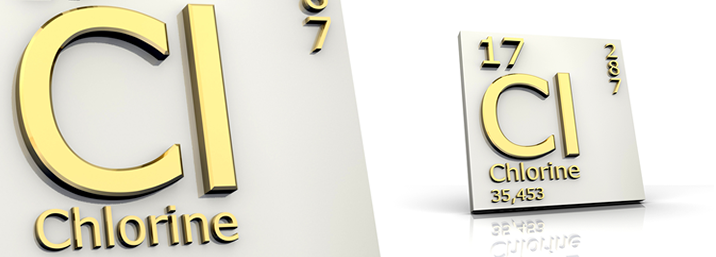How to Find Total Percentage of Chlorine within a Sample

Chlorine Determination via Schoniger Combustion:
The preceding is a brief description of our techniques used in chlorine determination.
The solid sample is weighed into ashless paper and inserted into a custom-made Platinum stopper. The stopper is fitted with a flask that is charged with the appropriate reactants and oxygen. On combustion, the chlorine present is trapped as HCl.
The HCl gases are absorbed on the liquids and the resulting liquid is then removed and titrated with a standardized solution of Ag-perchlorate in I-proh. Bromine and Iodine react in the same manner; therefore these do present interferences. Hg is also an interference.
The most common standard for this determination is Para-Cl Benzoic Acid available through the NIST. There are others that may be used on occasion.
Interferences: include Al, Br, Eu, Hg, I, Mg, Na, Ni, Se, Sn and Ti.
